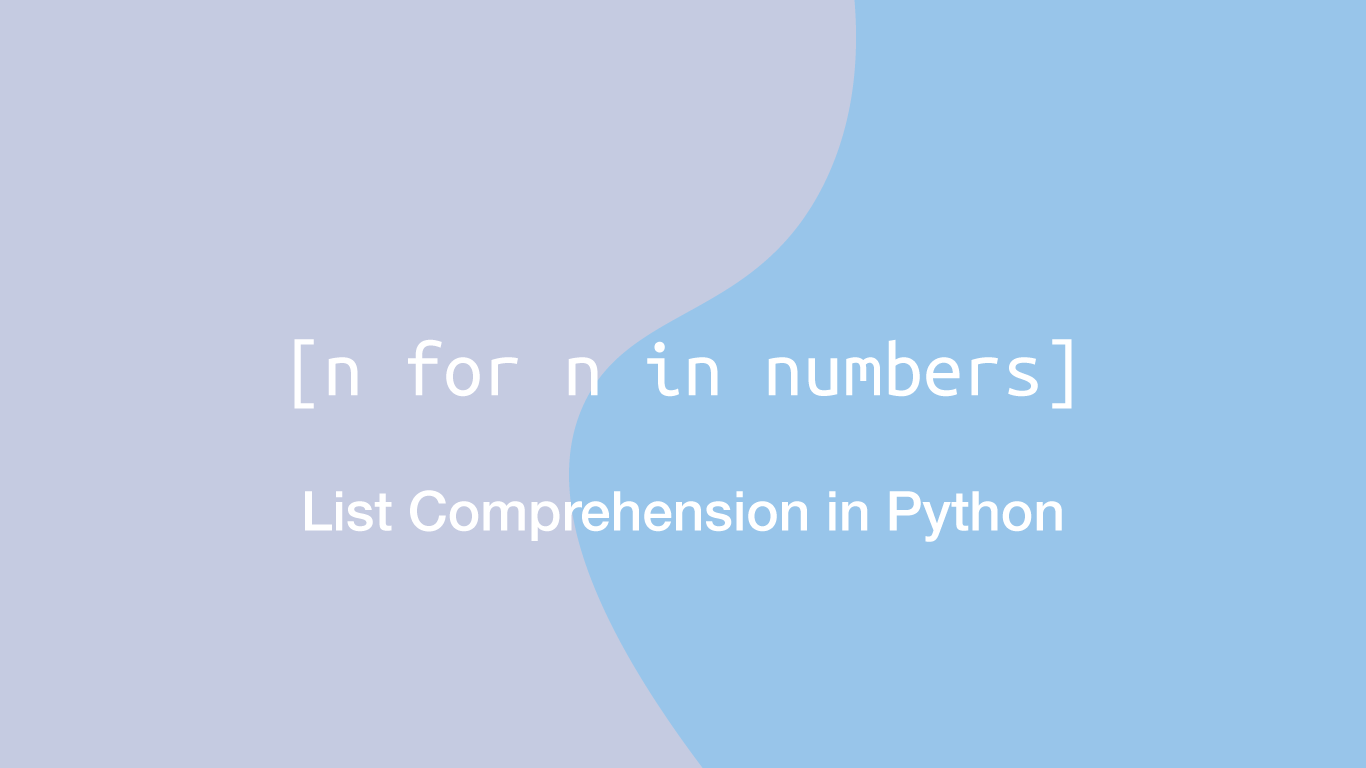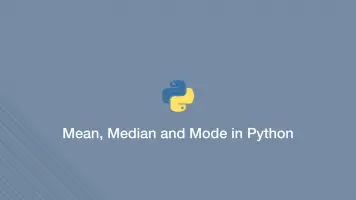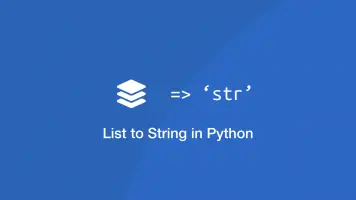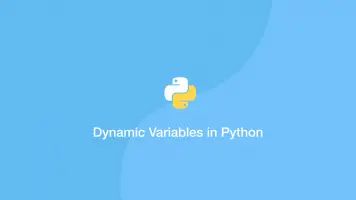How to Use Python List Comprehension
Essentially, list comprehension in Python is a cleaner way of creating lists from iterable data types. In this tutorial, we will learn how to create lists using list comprehension and when using a more traditional approach might make more sense.
Creating a List with a For Loop
Before we jump into list comprehension let's look at how we might build a list from an iterable such as a string. In the example below, we are iterating through the string hello and adding each value to a list using the append() method.
items = []
string = 'hello'
for c in string:
items.append(c)
print(items)
['h', 'e', 'l', 'l', 'o']
In the above code, we are creating an empty list, then using a for loop we are iterating through each character in the string and appending it to the list before printing the populated list.
Creating a List Using List Comprehension
The above example is perfectly good Python code, though we can do the same thing on one line using list comprehension.
string = 'hello'
items = [c for c in string]
print(items)
['h', 'e', 'l', 'l', 'o']
In the example above we are creating a new list and adding values to it by running a for loop on an iterable within it. That is essentially how list comprehension works.
List Comprehension with Tuples, Dictionaries
So far we have only used strings to demonstrate list comprehensions, but it is possible to use other iterable data types with list comprehensions such as tuples, dictionaries .etc. Let's try a couple more examples using different types of iterables and see what the output is.
Tuple to list:
tup = (1,3,4,6)
items = [c for c in tup]
print(items)
[1, 3, 4, 6]
Dictionary to list:
d = {'apples': 1, 'oranges': 2}
items = [[c,str(i)] for c, i in d.items()]
print(items)
[['apples', '1'], ['oranges', '2']]
List Comprehension with Conditional Statements
It is possible to use conditional statements with list comprehensions by placing the logic after the for loop (which will run like it was inside of the for loop on each iteration.) If the statement returns True the value will be added to the list.
string = 'hello'
items = [c for c in string if c != 'h']
print(items)
['e', 'l', 'l', 'o']
Nested IF Statements
To nest if statements place one if statement after the other. In the example below, we are checking if the value is less than 6 then checking if it is greater than 1 – if both conditionals return True the value will be added to the new list.
tup = (1,3,4,6)
items = [c for c in tup if c < 6 if c > 1]
print(items)
[3, 4]
IF ELSE Statements
An else statement must be put in front of the for loop because we are changing what value is added to the new list depending on the result of a conditional.
tup = (1,3,4,6)
items = [c if c < 6 else 1 for c in tup]
print(items)
[1, 3, 4, 1]
In the example above we are saying if the value is less than 6 add it, else add 1 instead.
Nested List Comprehension Loops
It is possible to nest list comprehensions inside parent list comprehensions like this:
items = [[d for d in range(0,3)] for n in range(0,9)]
print(items)
[[0, 1, 2], [0, 1, 2], [0, 1, 2], [0, 1, 2], [0, 1, 2], [0, 1, 2], [0, 1, 2], [0, 1, 2], [0, 1, 2]]
In the above example, we are building a list of lists using a range of numbers.
When Should I Use List Comprehension?
It is subjective. The whole point of list comprehensions is to make the code smaller while still being readable – you will have to judge whether things are looking too complex. For building lists that require little or no logic, list comprehension is the way to go. When building nested lists using lots of logic, the regular for loop approach is probably going to be more readable.
Conclusion
You now know how to use list comprehension in Python to build lists in a variety of different ways and when you might choose not to use them.







